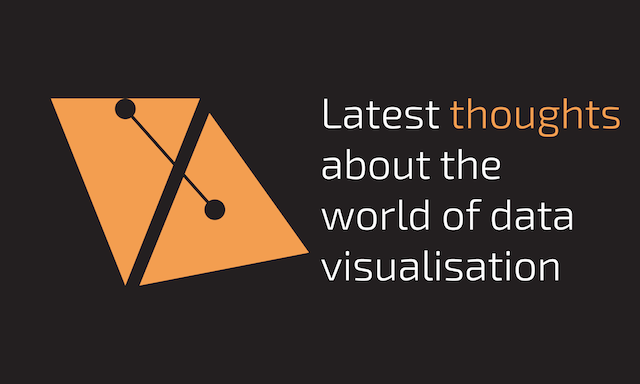This is a guest post from Jon Schwabish, an economist and data visualization creator. You can reach him at jschwabi@yahoo.com or by following him on Twitter @jschwabish. Many thanks to Job for his efforts to keep us poor folk who aren’t able to make it to this great flagship event.
Day 3! I’ve made it through three full days of Visweek and I’m starting to feel like I’m running on fumes. Some nice events today, so let me get to it.
In the Morning
I was happy to start the morning with the Visweek Papers Fast Forward, which is where the authors for all 40 or so papers get 30 seconds each to advertise their work. It’s such a better way to see what’s coming than reading abstracts.
My first session was the Visweek Industry Presentations: A View for the Future, which included presentations by representatives from Tableau, Kitware, Intel, IBM, and Microsoft Excel. I got the most out of the talk by Scott Ruble from Excel because he did the best job of looking forward—he discussed the various visualization devices, interaction modes (e.g., touchscreens, voice controls), devices, platforms, and services that he thinks are on the horizon for both developers and users. He also previewed the new Excel 2013, which includes a “Recommended Charts” option as well as some other new visualization tools. You should be able to get a free preview here. Jock Mackinlay did a nice demonstration of Tableau desktop and also gave us a preview of the upcoming mobile version.
The second session this morning—Visual Analytics in Practice—featured myself, Kevin Lynagh (Kerning Labs) and Shahtab Wahid (Bloomberg). Obviously, this was the best session of the entire week! Kevin’s talk was excellent—solid slides; good, clear message; nice story; and good advice to students and practitioners. Shahtab’s talk was an interesting look at the visual tools and products he’s helped developed at Bloomberg. (With respect to my talk—my slides are available here. I’ll just say that I got a lot of great feedback from visualization practitioners and academics alike, and I’m looking forward to heading back to DC with new tools to try, strategies to consider, and people to bother for help).
Things I Missed in the Morning
I wasn’t able to see everything this morning, but it was clear from the #Visweek Twitterfeed that there are three papers I need to check out:
1. Nicholas Kong and Maneesh Agrawala presented a paper on graphical overlays that are layered onto charts to “facilitate a larger set of chart reading tasks”.
2. The Typographic Map tool by Shehzad Afzal and others, with which you can make maps that merge text and spatial data. You can play with it here.
3. Justin Talbot, John Gerth and Pat Hanrahan’s paper that shows William Cleveland’s Banking to 45° aspect ratio design guideline might not actually be minimized around 45° or, as it became to be called here, Clevelandgate.
In the Afternoon
So after my talk and a tasty lunch in Capitol Hill, I was kind of in and out of sessions this afternoon. The tutorial on color theory by Theresa-Marie Rhyne was too technical for me. The panel on Reproducible Visualization Research was more interesting and appears to highlight challenges in the academic community that many fields face. Specifically, the panel was charged with discussing what changes might be needed to visualization research to assure greater reproducibility. Although there are parts of the data visualization field that have been around for a while, much of it is fairly young, so this may just be part of the field’s growing pains. I mean, the American Economic Association only introduced a disclosure policy in July 2012.
I did spend a lot of time in the afternoon talking to a lot of great people—practitioners, academics, programmers, and other people interested in ways in which basic data visualization strategies can be taught to researchers and analysts who may not be as familiar with the available data visualization tools and strategies.
In the Evening
I spent about an hour standing by my poster during the Poster Viewing and talked to a lot of people, some of whom were interested in what tools I use to create infographics, how I go about deciding which charts to use for the data at hand, strategies on how to make a good infographic, and how the infographics are used.
So that’s all for today. Unfortunately, I leave around noon tomorrow, so I only get to see a couple of things in the morning, but I’ll follow it up with some summary thoughts.

